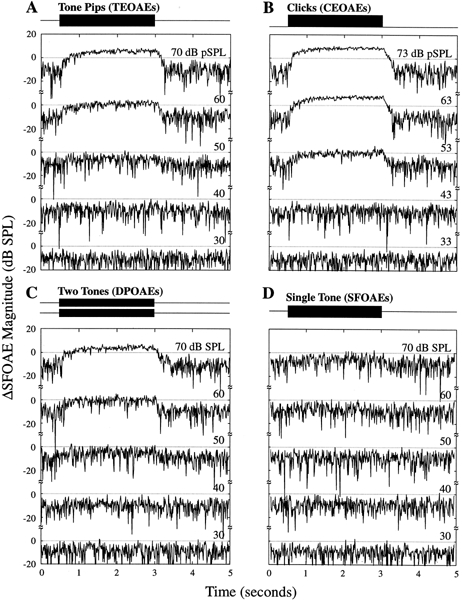Figure 4.

Efferent activity elicited by common probe sounds. Shown are time courses of the changes in stimulus frequency otoacoustic emissions (ΔSFOAEs) elicited by various sounds normally used as probe sounds. A. The tone pips were 900 Hz, with 1 period rise and fall times and two periods of plateau, and were presented 1 pip every 20 ms. B. The clicks were produced by 0.1 ms square electrical pulses, presented every 20 ms. C. The two-tone stimulus had a lower-frequency primary (f1) at 900 Hz, and a higher-frequency primary (f2 = 1.3 * f1) which was 10 dB lower in level than the f1 level listed in panel C. D. The single-tone stimulus was 900 Hz. The sound levels of the stimuli are given in peak equivalent SPL (pSPL) for tone pips and clicks, and normal (RMS) SPL for single tones and for the f1 tone of the two-tone stimuli. All elicitors were in the left ear. The probe tone was 40 dB SPL, 900 Hz in the right ear of subject 82. Each trace is the magnitude of the synchronously averaged heterodyne waveforms from four sets of data, each with six 5 s response periods. The abbreviations in parentheses indicate the type of otoacoustic emission (OAE) elicited by each probe sound: transient-evoked OAEs (TEOAEs), click-evoked OAEs (CEOAEs), distortion-product OAEs (DPOAEs), and stimulus frequency OAEs (SFOAEs).
